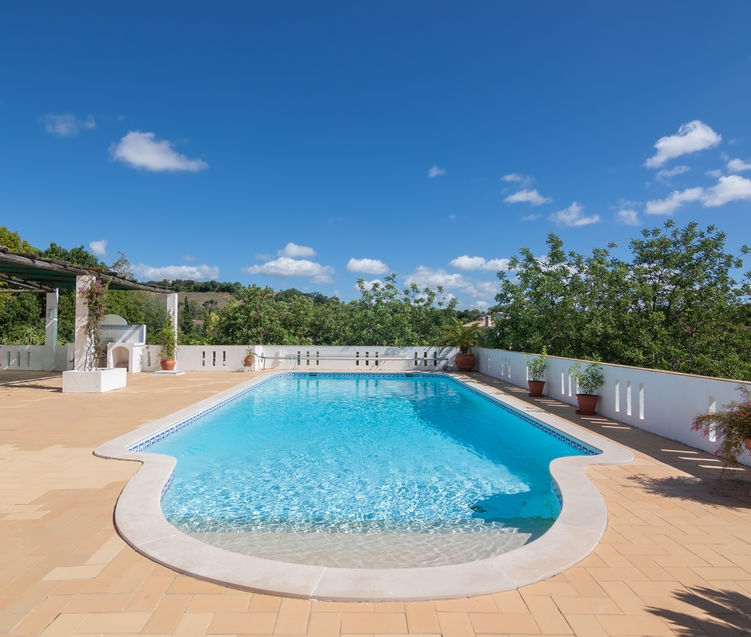Top 4 Causes of Swimming Pool Accidents
February 3, 2020 | Category: Swimming Accidents | ShareThe Centers for Disease Control (CDC) reported on child-drowning and senior-drowning incidents, as follows:
 Child-drowning is the leading cause of death for children age 1 to 14, and three children die every day as a result of drowning. With the exception of birth defects, drowning kills more children between 1 and 4 than anything else.
Child-drowning is the leading cause of death for children age 1 to 14, and three children die every day as a result of drowning. With the exception of birth defects, drowning kills more children between 1 and 4 than anything else.
Medically frail senior citizens are also vulnerable to drowning accidents.
In a study by the Consumer Product Safety Council (CPSC) released in November 2015, 27 percent of consumer-related senior deaths reported to it were most frequently related to drowning in pools.
What are the top 4 causes of swimming pool drownings?
The CDC says the top 4 causes of Florida swimming pool drownings are:
Lack of the right type of barriers – Florida’s Residential Swimming Pool Safety Act (SS 515.29) says that a residential swimming pool barrier must have all of the following characteristics:
The barrier must be at least 4 feet high on the outside.
The barrier may not have any gaps, openings, indentations, protrusions, or structural components that could allow a young child to crawl under, squeeze through, or climb over the barrier.
The barrier must be placed around the perimeter of the pool and must be separate from any fence, wall, or other enclosure surrounding the yard unless the fence, wall, or other enclosure or portion thereof is situated on the perimeter of the pool, is being used as part of the barrier and meets the barrier requirements of this section.
The barrier must be placed sufficiently away from the water’s edge to prevent a young child or medically frail elderly person who may have managed to penetrate the barrier from immediately falling into the water.
-
Lack of the right type of barriers – Florida’s Residential Swimming Pool Safety Act (SS 515.29) says that a residential swimming pool barrier must have all of the following characteristics:
-
The barrier must be at least 4 feet high on the outside.
-
The barrier may not have any gaps, openings, indentations, protrusions, or structural components that could allow a young child to crawl under, squeeze through, or climb over the barrier.
-
The barrier must be placed around the perimeter of the pool and must be separate from any fence, wall, or other enclosure surrounding the yard unless the fence, wall, or other enclosure or portion thereof is situated on the perimeter of the pool, is being used as part of the barrier and meets the barrier requirements of this section.
-
The barrier must be placed sufficiently away from the water’s edge to prevent a young child or medically frail elderly person who may have managed to penetrate the barrier from immediately falling into the water.
-
Lack of supervision –The CDC reminds everyone that when children are in or near water (including bathtubs), adult swimmers should supervise them at all times. Drowning happens quickly and quietly. Adults with the responsibility of watching children in or near water should avoid distractions, such as playing cards, reading books, talking on cell phones, and using alcohol or drugs.
- Failure to install entrapment devices –Florida law requires a public swimming pool or spa to be equipped with an anti-entrapment system or device that complies with the American Society of Mechanical Engineers/American National Standards Institute standard A112.19.8, or any successor standard. A public swimming pool or spa built before January 1, 1993, with a single main drain other than an unblockable drain must be equipped with at least one of the following features that complies with any American Society of Mechanical Engineers, American National Standards Institute, American Society for Testing and Materials, or other applicable consumer product safety standard for such system or device and protects against evisceration and body-and-limb suction entrapment.
- Excessively slippery or uneven pool decks – Florida Building Code rules say pool wet decks shall be constructed of concrete or other nonabsorbent material having a smooth slip-resistant finish. Wet deck area finishes shall be designed for such use and shall be installed in accordance with the manufacturer's specifications. Wooden decks and walkways are prohibited. Pool wet decks shall be uniformly sloped at a minimum of 2 percent to a maximum of 4 percent away from the pool or to deck drains to prevent standing water.
“Should you or a loved one be injured in a swimming accident, please contact our firm 24/7. We have the experienced team to assist you, and there are no costs or attorney fees until we get a monetary recovery for you,” said Randall Spivey, Port Charlotte Pool Accident Attorney, at Spivey Law Firm, Personal Injury Attorneys, P.A.
Port Charlotte Pool Accident Attorney Randall L. Spivey is a Board Certified Trial Attorney – the highest recognition for competence bestowed by the Florida Bar and a distinction earned by just one percent (1%) of Florida attorneys. He has handled over 2,000 personal injury and wrongful death cases throughout Florida. For a free and confidential consultation to discuss your legal rights, contact Spivey Law Firm, Personal Injury Attorneys, P.A., in Lee County at 239.337.7483 or toll-free at 1.888.477.4839, or by email to Randall@SpiveyLaw.com. Visit SpiveyLaw.com for more information. You can contact Spivey Law Firm, Personal Injury Attorneys, P.A.in Charlotte County at 941.764.7748 and in Collier County at 239.793.7748.

